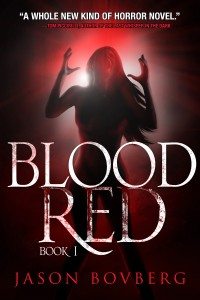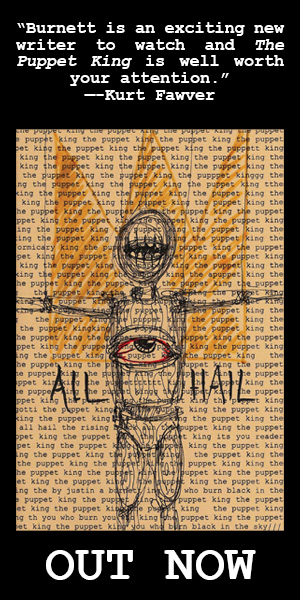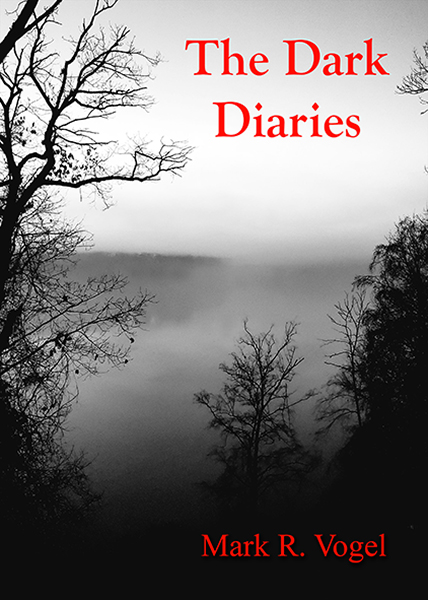
What is special about your main characters and worth mentioning here?
Blood Red essentially takes a damaged teen girl and throws her mercilessly into an end-of-the-world hellstorm. I loved the idea of seeing what this young woman might do, moment by moment, when faced with impossible horrors. Would she rise to the challenge, would she make mistakes, would she shrink into the background? Would she become a leader? A capable survivalist? Or a whiny brat?
I’ve talked a lot about Rachel, the protagonist of Blood Red (see my blog post “Strong Young Women at the End of the Worldâ€) and how she does finally become the heroine of the book, but I haven’t talked much about her voice and perspective. Blood Red is a real-time story in which we watch Rachel’s every move. It takes place over the span of just a couple days. We have a laser focus on her decision-making and her triumphs and her mistakes. For these reasons, I chose to tell the story in a very urgent present tense. It’s really the only type of narration that would work for Blood Red: I love the way it mirrors the immediacy of the story and the urgency of Rachel’s actions.
Can you share with our readers a bit about the world that you’ve created in ‘Blood Red’?
I moved to the idyllic town of Fort Collins, Colorado, in the early ’90s. This is a town that is often ranked as one of the most beautiful, safest, and most peaceful small cities in America. It’s just waaaay too fantastic. So I decided that it needed to undergo the apocalypse. My book absolutely savages this town, particularly the Old Town area of downtown—which, by the way, was a model for Disneyland’s Main Street. I didn’t so much create a world as co-opt one. How could I let such a beautiful town go undamaged?
Blood Red has a strong sense of place in Fort Collins. I wanted the book to be a kick for local readers, and in fact they have really embraced it for this reason. At my events, they get all giggly; the setting has definitely increased local interest and sales.
What inspired you to create the world of ‘Blood Red’?
One of the most interesting things about Blood Red—something that really sets it apart—is the real-time telling of it. I wanted to create a strong sense of immediacy. That type of story has several precedents that I would call direct inspirations. For example, the movie Cloverfield. In this film, we see an apocalyptic event from a very limited, real-time perspective, enduring the horrors first-hand and experiencing the characters’ decision-making as it happens. We also see the immediate successes and failures of those decisions. Another example is Steven Spielberg’s near-real-time adaptation of War of the Worlds. As the world falls apart in the larger story, we only see the intimate effect on this family. That’s a captivating kind of storytelling, and it’s what I wanted for Blood Red.
But as far as the characteristics of the “zombies†or “monsters†in Blood Red, I really wanted to turn the genre on its head. For me, the zombie genre had been getting a little stale—too focused on the Romero staples, perhaps—and so I wanted to create something altogether new. I can promise that the “undead†in Blood Red amount to something you’ve never seen before, owing more to something like John Carpenter’s The Thing than to Romero’s Dawn of the Dead. In fact, perhaps you can see that my book’s cover owes a debt to the poster art for The Thing. But in the end, Blood Red is very different from that story, too. There’s a whole lot of weirdness going on, that’s for sure.
What kind of research went into fine tuning the world of ‘Blood Red’? Did anything you learn or write for the novel surprise you?
With its strong local setting, I did find that I initially wanted to research local landmarks and visit settings—such as the hospital where much of the action takes place, and the Target store where a particularly frightening scene occurs—with an eye toward accuracy inside and out. But at a certain point, I decided to be true to exteriors but fictionalize interiors. I’m sure the innards of my hospital bear no resemblance to the actual Fort Collins hospital, and that’s fine. It’s a story about the apocalypse and undead humans. The details of corridors and room numbers don’t matter.
Surprises? There was one huge surprise during the writing process, but I can’t really talk about it. Spoiler! Suffice it to say that although I had the book laid out in outline form, a revelation occurred to me halfway through that forced me to recast the outline and change course. I think it makes the book unpredictable and fun—in a terrifying way.
Permuted Press is known for their work with the post-apocalyptic genre, how has working with them been for you?
I joined the Permuted Press stable literally days before Jacob Kier, the founder, stepped down and handed over the reins to new owners. I sometimes feel as if I exist in a gray zone between owners: I’m not firmly entrenched among the older, established crew, and yet I’m also not really part of the large new group of writers who have recently joined the fold. Jacob was no longer there to bring me up through his process, and the new owners were still getting their bearings during the preproduction of Blood Red. The upshot was that I felt I had to ask a lot of questions and probably became annoying!
All that being said, the new owners seem to be building something special, with a lot of new opportunities for Permuted authors. Just recently, the press hired a marketing guru who promises to be a huge help with outreach efforts. Marketing these books is its own full-time job, and I feel that I no longer have time to actually write! Also, the press has retained its attention to great design, and I feel very privileged to have been involved in that process for Blood Red. My cover, for example, is exactly what I was hoping for, and I’m looking forward to a similarly rewarding process for Draw Blood, the sequel.
The age old question which always must be asked, slow or fast zombies and why?
I think if you’re working with actual zombies—dead people who have risen from the grave—they have to be slow. Their decomposing, falling-apart bodies simply won’t allow for fast motion and quick reflexes. If you have fast “undead,†they’re not zombies. They’re something else. And right there is a hint about Blood Red.
Do you have any plans for future zombie novels lined up? Either a continuation of the world you created in ‘Blood Red’ or an entirely new setting?
Draw Blood (which is with the publisher and scheduled for April 2015) starts up right where Blood Red leaves off, and it’s told from the perspective of a different character. I’m anxious to see how people respond to this notion of multiple perspectives of the same end-of-world scenario. I was influenced, again, by Cloverfield, the original intention of which was to have several movies from the points of view of different cameras—separate experiences under the umbrella of the same catastrophe. The third and final book, Blood Dawn, will be told from a third and possibly fourth perspective.
What is your zombie survival plan or what would be the start of how you winged it in case of a zombie outbreak?
My plan is to barricade myself in my basement office and simply write my own ending.
Who are 5 people, besides immediate family and nearby friends, that you would want to be stuck with or in a group with during an apocalyptic event not exactly a zombie outbreak but something that would affect life as you know it on a global scale? Why?
I would want to be among strong, sharp, witty survivors—people who are physically capable, mentally adept, and possessed of good humor so that the group wouldn’t descend into hopelessness. For these reasons, I would choose Matt Damon, Jon Stewart, Emily Blunt, Neil Degrasse Tyson, and Barack Obama.
Who do you feel is directly responsible for your entry into the field of writing and specifically the inclusion of zombies into your work?
I owe my writing capability to my dad; in fact, I’ve dedicated the book to his memory. A great, thoughtful writer in his own right, he was my most ardent supporter till the end. He didn’t quite live to see publication, but he read the book and bragged about it to everyone.
Zombies? Like everyone, I adore the early Romero stuff—found it hugely inspirational—but when you read Blood Red, you’ll see that influences come from many, many places, from previously mentioned John Carpenter, to David Cronenberg, to young Peter Jackson (on the movie side), and from Richard Matheson, to Richard Laymon, to Alden Bell (on the book side). My goal was to take the zombie concept, flip it over, and shake it brutally.
How have your friends and family been supportive of your work?
Like most writers, I have a core group of friends and family who have been there from the start, from long-time writer’s group buddies to family members who are ultimate cheerleaders. And there are a whole lot of reliable readers and buyers who devour everything and push me forward. I simply couldn’t do all this nonsense without them. They know who they are. I’m hoping for that group to grow and grow!
Do you have any suggestions, aside from your own work that is, on novels you recommend zombie fanatics pick up?
Currently, I’m really enjoying M.R. Carey’s The Girl with All the Gifts, a unique take on zombies that features a young one who can learn. My absolute favorite zombie novel is Alden Bell’s The Reapers Are the Angels, an astounding, beautiful post-apocalyptic novel. Bell (pseudonym of Joshua Gaylord) is looking for an American publisher for his follow-up, Exit Kingdom. (He also provided a wonderful cover blurb for Blood Red, for which I’m eternally grateful.) Peter Stenson’s Fiend is a whole lot of deranged, meth-addled fun. Finally, This Dark Earth by John Hornor Jacobs is awfully great.
Where can readers and fans alike find out more information about your books and upcoming projects that you’re involved in?
Check me out on my website, and please feel free to “like†my Facebook author page. Those are the two best ways to keep on top of blog posts, events, and release schedules. Thanks!
Website: www.jasonbovberg.com
Facebook: https://www.facebook.com/jasonbovberg.author
Goodreads: http://www.goodreads.com/book/show/20828228-blood-red
Bio:Â 





Blood Red is an intelligent horror novel in the best tradition of page turning, story telling fun. I’m very much looking forward to book 2. Thanks for the insightful interview.
Great book. I’m selective about horror fiction and this one is not just a great story, but truly well written! Waiting impatiently for book 2.